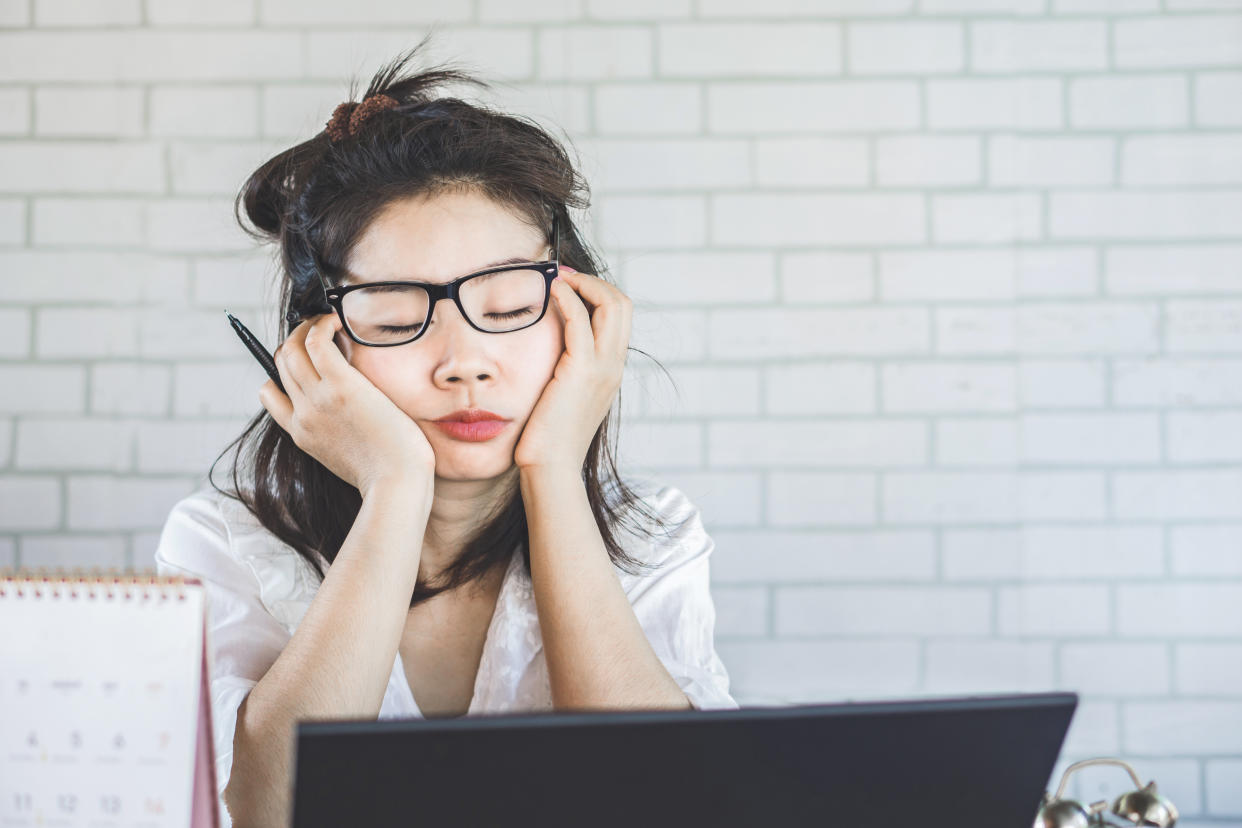Should offices have ‘nap pods’?

Office workers are well-versed with the mid-afternoon slump.
A day of meetings, conference calls and ticking things off a never-ending to-do list can leave many craving a nap.
With growing research highlighting the importance of sleep, and a recent emphasis on worker wellbeing, some offices are introducing designated “chill-out” areas, where stressed employees can catch some shut eye.
Yahoo UK put a “sleep pod” to the test, taking some time out to unwind amid a busy day in the newsroom.
Read more: Does sleeping next to our phone fuel insomnia?
Nearly a third (31%) of UK adults are thought to suffer from insomnia.
The problem is similarly widespread in the US, where 30% of people have “sleep disruption”.
Chronic insomnia can be serious, with research linking it to everything from heart disease to cancer.
In the short term, many sufferers struggle to concentrate, have slowed reaction times and feel overly irritable.
Introducing “sleep pods” into an office may sound far-fetched, but could bring a host of benefits.
“Naps boost creativity and problem-solving ability”, said Dr Nerina Ramlakhan from Silentnight.
Lack of sleep has been linked to a suppressed immune system, leaving people vulnerable to infections.
“Company nap times would definitely work in the boss' favour in the long run, as fewer sick days would mean more functioning office days, and so actually, taking extra care of your staff will in time pay for itself,” said Dr Ramlakhan.
To enable employees to get some much-needed respite, chill-out areas should be technology-free.
“Ideally, these zones would be completely free of computers and mobile phones”, said Dr Ramlakhan.
While most are unable to get away from their desk for long, a 20-minute “cat nap” could be all it takes.
“The ideal time for a nap is 20-to-30 minutes or a full 90 minutes,” Dr Sujay Kansagra from Mattress Firm told Yahoo UK.
“Anything in between and you may wake up out of deep sleep, and have some residual grogginess.”
Read more: Why you should never sleep with the heating on
Insomnia sufferers may be better off just relaxing, rather than trying to nod off.
“Naps can delay night-time sleep onset”, said Dr Kansagra.
Sleeping too late in the afternoon could also leave people tossing and turning come bedtime.
While it is fine to have a mid-day slumber every now and again, regular naps may be a sign you need to improve your “sleep hygiene”.
Good sleep hygiene can include fitting black-out curtains to make the room dark, avoiding caffeine or listening to relaxing music before bed.

‘Sleep pods’: putting mid-work napping to the test
Yahoo UK was invited by Rest Space to “join the napping movement”.
Based in central London, I took 45-minutes out of a busy Thursday in the hope of catching some much-needed respite.
At midday, I set off on the 15-minute walk to Rest Space’s office.
My mind whirling with what I had to do that afternoon, sleep felt unrealistic.
Upon arrival, I found the “rest space” surprisingly spacious and not at all claustrophobic.
Seemingly inspired by the Scandinavian aesthetic, the square “pod” was fitted with ambient lighting and a calming aromatherapy mist.
A work in progress, the prototype is yet to find a comfortable – but wipe-cleanable – pillow.
The “chill-out soundtrack” was also interrupted by some less-than relaxing adverts.
Nevertheless, I kicked off my shoes and prepared to unwind.
Read more: How to sleep with a blocked nose
Full disclosure, I’ve never been a napper and didn’t nod off. But, it’s not all about actually sleeping.
Rest Space does not just focus on snoozing and instead encourages workers to take some time out.
One of its founders later explained to me how she would hear snoring in the toilets of her office while working in finance, with colleagues even “swapping sleep stories” in the lift.
Despite not nodding off, it was great to rest my eyes, take the weight off my feet and switch off, even if just for 20 minutes.
I expected to feel self-conscious when I emerged slightly bleary-eyed from the rest space into an open-plan office, but no one batted an eye.
The founders explained how in demand the rest space is with other businesses in the building, with people having to book slots for a nap.
One breastfeeding mother apparently uses the space to get some privacy and bond with her baby.
When back at my desk, I certainly had some newfound energy and productiveness.
For the sake of 20 minutes not working, I’m convinced there may be something to office “rest spaces”.



